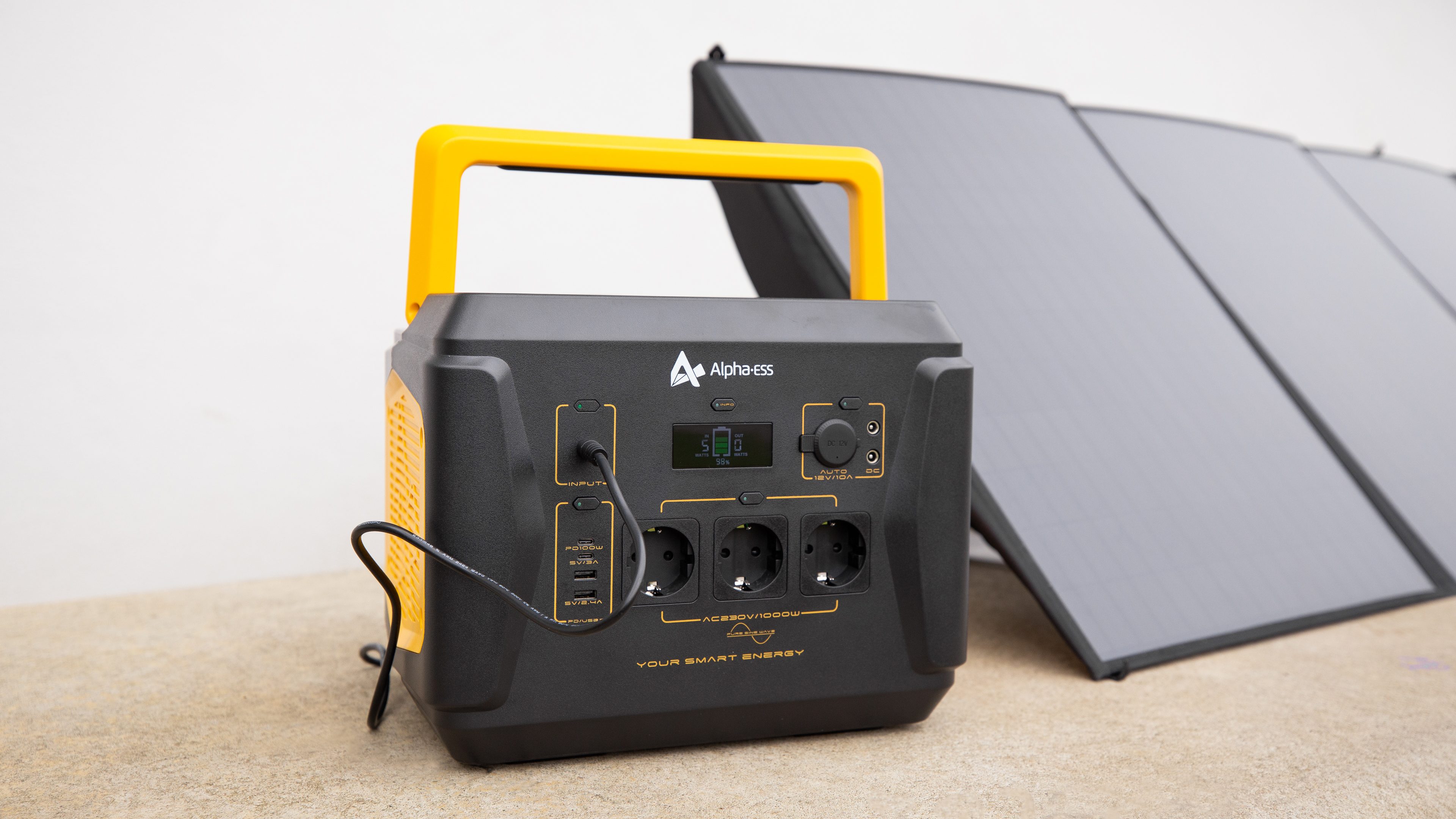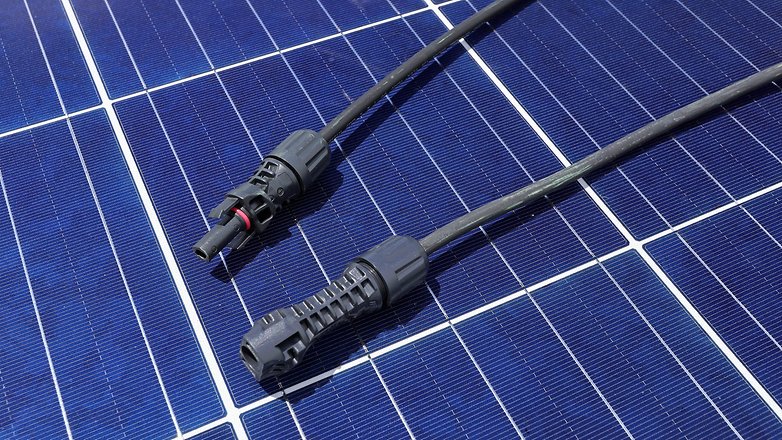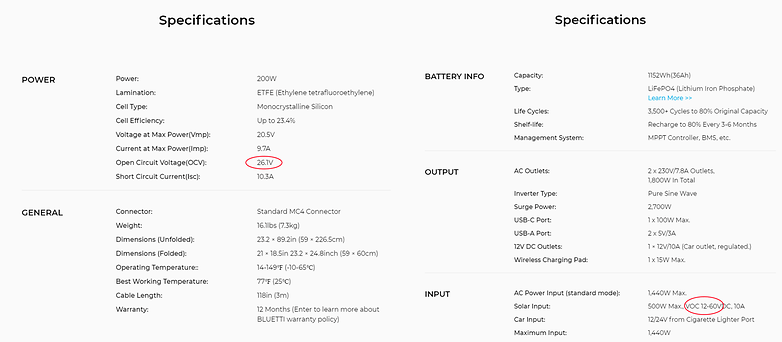
Which solar panel is compatible with power station? Since there is no primary standard to be beholden to, this question is, unfortunately, not quite easy to answer. In this article, nextpit explains which PV module is compatible with your power station—with or without an adapter. In addition, we also explain what you would have to consider in order not to destroy your power station!
Whether you want to defy the rising electricity prices with a mini balcony power station, have a solar generator for emergencies, or want to have energy while you are on the road by being off the grid, there are many good reasons to own a power station with solar panels. However, not every solar panel is compatible with all power stations.
Basically, you will need to pay attention to two things. First, can I physically connect the solar panel to my power station—either directly or via an adapter? And secondly: does the performance data of the panel match my power station at all? This is especially important when it concerns the voltage, because it is crucial you do not end up overloading your hardware.
Table of Contents:
Solar panel & power stations: Are the connections compatible?
For power stations, you will be able to find a variety of different connector types. In the following table, you can see which different types of connectors are typically available and what they look like.
Now what? There are other standards like Bluetti’s own aviation plugs, and different variants of DC plugs like the DC5525 present on the Alpha ESS Blackbee 1000. If you were to stumble across terms like APP or Anderson Powerpole, that basically means HPP, or High Power Port. It’s all exactly the same, just under a different moniker.

Make sure that your solar panel has the right connector for the power station. If you purchased the panel and the power station from the same manufacturer, this will not be an issue at all since compatibility is guaranteed. If you were to source your gear from different manufacturers, it would be prudent to ensure your equipment is directly compatible or are so by using adapters.
For solar panels, you would normally be walking on the safe side with an MC4 output. This general standard for PV modules is used for large roof modules and, in addition to a reverse polarity protected and waterproof plug connection, it has the advantage of letting you connect to several panels in series and in parallel easily.
However, make sure your power station offers an MC4 input either directly or via an adapter. There is no power station that we know of which offers a direct MC4 input. Typically, XT60 sockets (or more rarely: HPP, DC9020, or DC7909) are used here, with matching adapters to the MC4 input being included most of the time—Bluetti included.
If your power station manufacturer uses a proprietary port and does not offer any standard adapters, you have only one choice: You’ll have to buy PV panels from the same manufacturer.
Solar panels & power stations: Do the voltage and current match?
When looking for the right solar panel for your power station, you not only have to pay attention to the matching connection, but also to the matching power. This is especially important for solar panels that deliver too much voltage as they can damage your power station beyond repair.
You can find the corresponding details in the data sheets of the products. In the example below, we selected a couple of Bluetti products. On the left, you can see the specifications of the Bluetti PV200 (review) solar panel, while the right features the specifications of the Bluetti AC180 power station.

In the example above, you can see that the solar input of the Bluetti AC180 supports anywhere from 12 V to 60 V. The solar panel has an open circuit voltage of 26.1 V, which falls right in the middle of the supported range. You must always pay close attention to voltage, making sure to stay within the permissible range.
Even a few volts over can cause hardware damage. It’s best to allow a little more wiggle room with voltage, about 10% upwards, because at very low temperatures, the panel voltage can increase by up to 10 to 15% over the standard rating.
In the specifications, you will also find the maximum current you can apply to the input. In the above example, this is 10 A for the power station and 9.7 A for the solar panel under optimal conditions. This fits well together. If the current is a bit too high, the power station simply draws current from the panel as specified in the specifications. However, you should avoid exceeding the maximum specified current by a drastic amount.
The technical data also tells you whether you can combine it with several other solar panels. There are basically two possibilities here:
Series connection: Add the voltage
Here, you connect the solar panels like a chain with the positive pole of one panel to the negative pole of the next panel. You then connect the plus and minus poles of your panel chain to the power station. The voltages will add up here—three panels at a maximum of 20 V each, resulting in a total of 60 V, which is just within the specification for the above example. However, we would recommend you to leave some margin for error.
Parallel connection: Add the current
For a parallel connection, you connect all of the positive poles of the panels to the positive input of the power station and do the same with the negative poles. Voltage remains the same here, but the current adds up. To cite the above example, three PV panels at 10 A would provide you with 30 A maximum in total, which is well above what is specified.
Even if your power station does not shut down due to an overload, it will at least only be able to use a maximum of 10 A—and any additional energy produced above that figure is wasted.
Do you have any other questions about connecting solar panels to your power station? If so, drop them in the comments. Also, do let us know if you already have such a solar panel-power station combo in your house. We look forward to your feedback.






